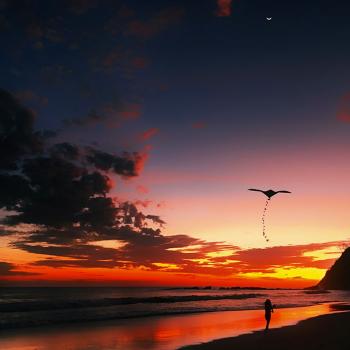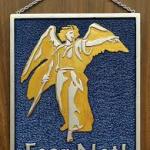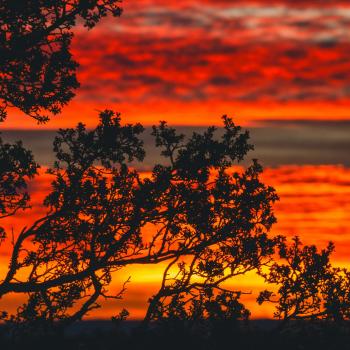Editors' Note: This article is part of the Public Square 2014 Summer Series: Conversations on Religious Trends. Read other perspectives from the Pagan community here.
On the phone with my father, I find myself lost for words when he sighs and admits, "I just don't have much hope for my generation anymore. Maybe there's still time for you kids to fix this..." The resignation in his voice weighs on my heart.
I could be angry. I've griped before about the inaction of the Boomers regarding climate change. I've watched the conversation shift over the past year, denial giving way to the defeatist belief that trying to do anything now would be too little, too late. Even lifelong conservationists have started to talk about dark ecology—activism without hope. It'd be easy to see this as just another excuse to do nothing.
But just now, compassion outweighs anger. I grope for a way to reassure my dad that there's still a lot we can do. I know that what he's really asking for is forgiveness. Even so, I don't know what to say. Over the phone, from thousands of miles away, I hear the faint call of an owl in the dusk.
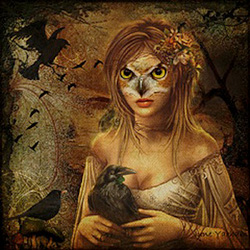 |
| The Bird Woman—June Yarham, Flickr C.C. |
My gods are the gods of nature, among them Blodeuwedd, owl goddess of Welsh mythology. Her story tells of love, betrayal, punishment, and transformation. In the Pacific Northwest, she is also a goddess divided. Global warming and environmental changes threaten native owl species even as non-native owls move in to claim disrupted spaces. The endangered Northern Spotted owl has become a national symbol of harmful deforestation. But another threat to its survival comes from its cousin, the Barred owl, a larger bird that outcompetes the Spotted for territory and food. Once restricted to the eastern U.S., over the past century Barred owls have expanded westward, thanks largely to humans planting more trees in the midwest, providing habitat for the bird to cross the formerly impassable Great Plains.
Now, some conservationists are proposing a cull of Barred owls in hopes that reducing their numbers will offer some protection for vulnerable Spotted owl populations. Others object to this policy of killing one species to save another—questioning our ability, as well as our right, to choose.
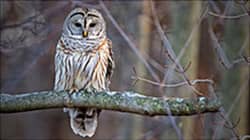 |
| The Barred Owl—nebirdsplus, Flickr C.C. |
This debate brings me to a central paradox of my nature-centered spirituality, a controversy I just cannot resolve one way or the other. Sometimes my sympathies lie entirely with the Spotted owl; other times I'm a stalwart defender of the Barred. The fact that I cannot just "pick a side" is one of the reasons this dispute speaks so powerfully to the place we find ourselves now, awakening to the Anthropocene. It sends me seeking a wisdom deeper than my own—the wisdom of a goddess.
We feel ambivalence toward animals who are hardy (or foolhardy) enough to manage to survive side-by-side with humans in urban and suburban landscapes: the crow, the possum, the coyote, the rat—creatures we fear, disparage, even kill without a qualm. But every once in a while, they linger near us long enough to fascinate. Here in Seattle where no Spotted owls could survive, I've heard the Barred owls calling in city parks, establishing territories, seeking mates. A friend leading a nighttime nature walk last year had a Barred owl follow his group for a full twenty minutes as they walked through moonlit woods. The Barred is brazen, unflinching.
We see the Barred owl as a pest and a threat, we call it aggressive and obnoxious, but perhaps this is psychological projection. As we continue to conquer the wilderness with our logging and development, we worry that the Barred's aggressive, territorial nature threatens the Spotted's survival.

